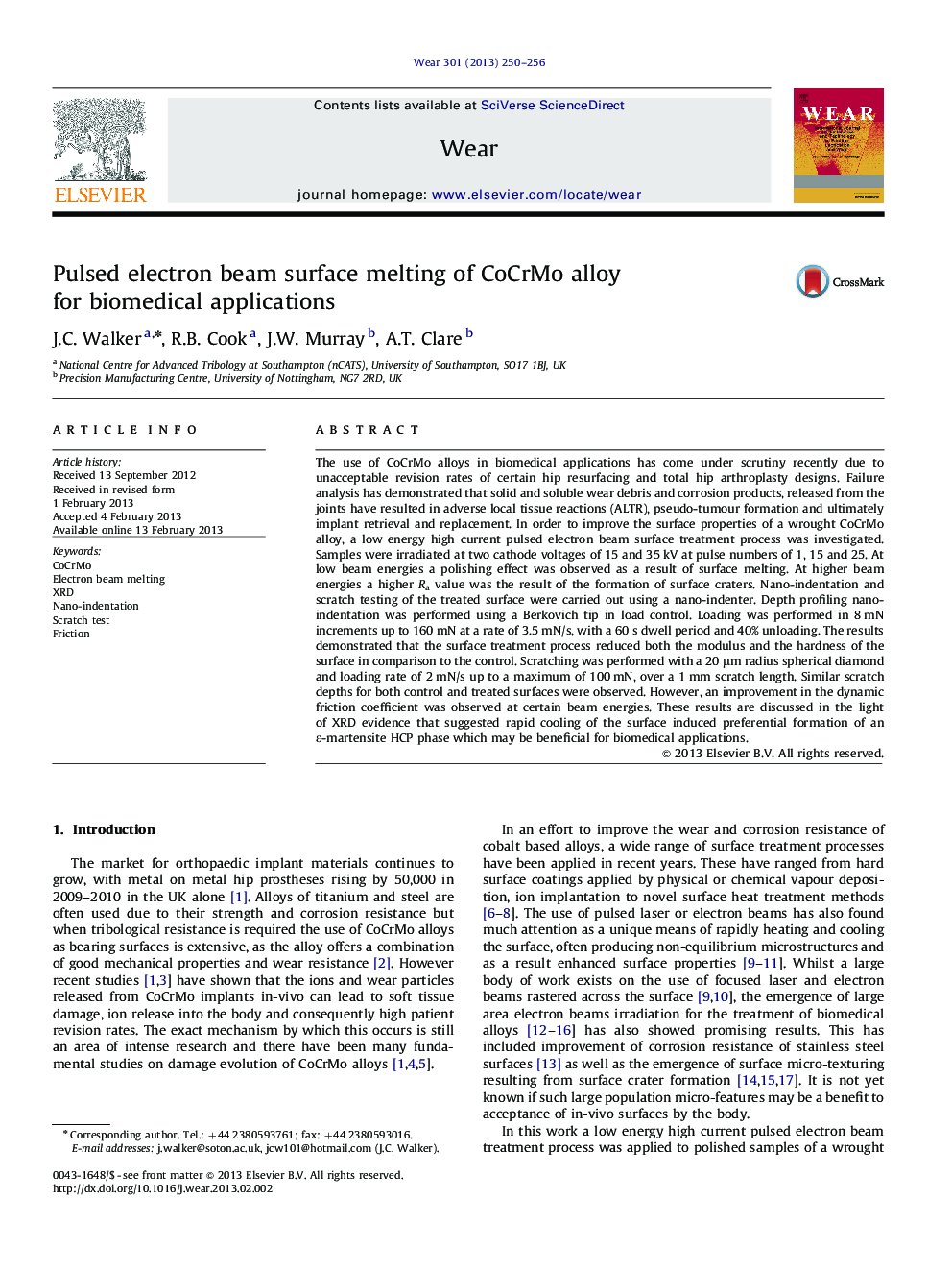| کد مقاله | کد نشریه | سال انتشار | مقاله انگلیسی | نسخه تمام متن |
|---|---|---|---|---|
| 617529 | 1455001 | 2013 | 7 صفحه PDF | دانلود رایگان |
عنوان انگلیسی مقاله ISI
Pulsed electron beam surface melting of CoCrMo alloy for biomedical applications
دانلود مقاله + سفارش ترجمه
دانلود مقاله ISI انگلیسی
رایگان برای ایرانیان
کلمات کلیدی
موضوعات مرتبط
مهندسی و علوم پایه
مهندسی شیمی
شیمی کلوئیدی و سطحی
پیش نمایش صفحه اول مقاله

چکیده انگلیسی
The use of CoCrMo alloys in biomedical applications has come under scrutiny recently due to unacceptable revision rates of certain hip resurfacing and total hip arthroplasty designs. Failure analysis has demonstrated that solid and soluble wear debris and corrosion products, released from the joints have resulted in adverse local tissue reactions (ALTR), pseudo-tumour formation and ultimately implant retrieval and replacement. In order to improve the surface properties of a wrought CoCrMo alloy, a low energy high current pulsed electron beam surface treatment process was investigated. Samples were irradiated at two cathode voltages of 15 and 35 kV at pulse numbers of 1, 15 and 25. At low beam energies a polishing effect was observed as a result of surface melting. At higher beam energies a higher Ra value was the result of the formation of surface craters. Nano-indentation and scratch testing of the treated surface were carried out using a nano-indenter. Depth profiling nano-indentation was performed using a Berkovich tip in load control. Loading was performed in 8 mN increments up to 160 mN at a rate of 3.5 mN/s, with a 60 s dwell period and 40% unloading. The results demonstrated that the surface treatment process reduced both the modulus and the hardness of the surface in comparison to the control. Scratching was performed with a 20 μm radius spherical diamond and loading rate of 2 mN/s up to a maximum of 100 mN, over a 1 mm scratch length. Similar scratch depths for both control and treated surfaces were observed. However, an improvement in the dynamic friction coefficient was observed at certain beam energies. These results are discussed in the light of XRD evidence that suggested rapid cooling of the surface induced preferential formation of an ε-martensite HCP phase which may be beneficial for biomedical applications.
ناشر
Database: Elsevier - ScienceDirect (ساینس دایرکت)
Journal: Wear - Volume 301, Issues 1â2, AprilâMay 2013, Pages 250-256
Journal: Wear - Volume 301, Issues 1â2, AprilâMay 2013, Pages 250-256
نویسندگان
J.C. Walker, R.B. Cook, J.W. Murray, A.T. Clare,